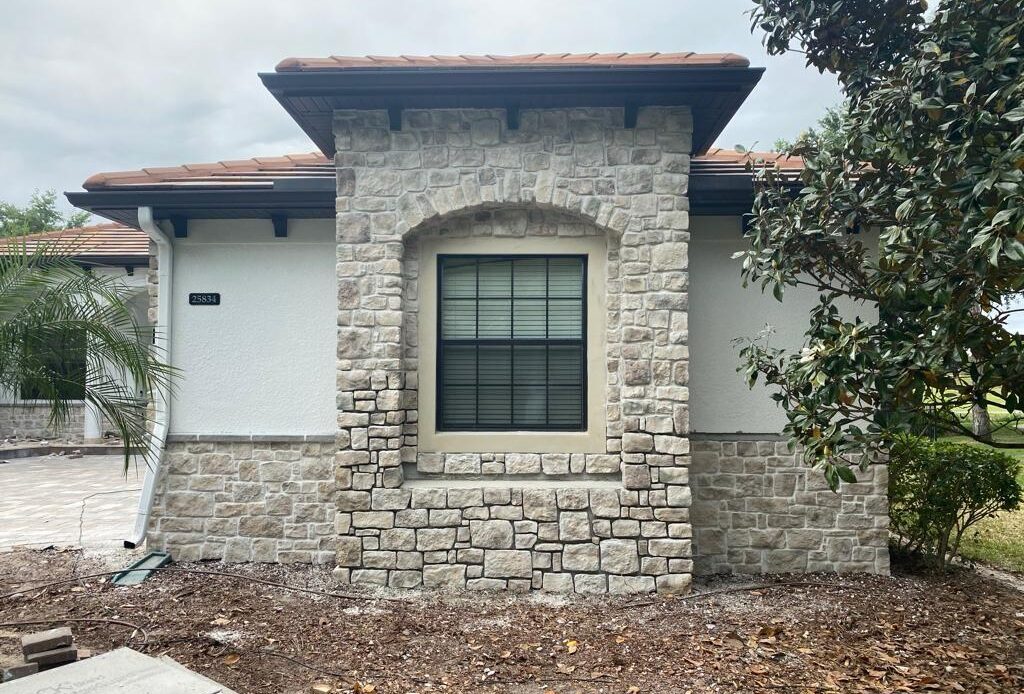Selecting the perfect stone veneer for your home involves a thoughtful balance of color and texture to achieve a harmonious and appealing aesthetic. This guide will walk you through the key considerations to help you make an informed decision that complements your property’s style and environment.
Understanding Stone Veneer Colors
Stone veneer colors range from light neutrals to deep earth tones, each evoking different moods and styles. Choosing the right color involves considering your home’s existing color palette, architectural style, and the surrounding environment.
Neutral Tones: Beige, cream, and light gray stones offer a timeless and versatile look, complementing various architectural styles from traditional to contemporary.
Earthy Hues: Warm browns, rusts, and tans create a rustic and inviting atmosphere, ideal for craftsman or country-style homes.
Cool Shades: Charcoal, slate, and blue-gray stones provide a modern and sleek appearance, suitable for minimalist and industrial designs.
When selecting a color, consider how it will interact with other exterior elements such as roofing, siding, and landscaping. A cohesive color scheme enhances curb appeal and creates a unified look.
Exploring Stone Veneer Textures
The texture of stone veneer adds depth and character to your home’s exterior or interior spaces. Different textures can evoke various architectural styles and feelings.
Smooth Finish: Offers a clean and polished look, often used in modern or formal designs.
Rough-Cut or Split Face: Provides a rugged and natural appearance, ideal for rustic or traditional styles.
Ledgestone: Features long, narrow pieces with a layered effect, suitable for both contemporary and rustic applications.
Fieldstone: Characterized by irregular shapes and sizes, creating a natural, unstructured look perfect for country or cottage-style homes.
Combining different textures can add visual interest and uniqueness to your design. For example, blending smooth and rough textures can create a dynamic contrast that enhances architectural features.
Factors to Consider When Choosing Stone Veneer
Architectural Style: Ensure the stone veneer complements your home’s architectural design. For instance, a colonial-style home may pair well with traditional brick veneer, while a modern home might look striking with sleek, smooth stone.
Color Harmony: Select colors that harmonize with existing elements like roofing, trim, and landscaping. Utilize color samples to visualize how the stone will look in different lighting conditions.
Environmental Context: Consider the natural surroundings. Stones that reflect the local landscape can create a seamless transition between your home and its environment.
Personal Preference: Ultimately, your taste plays a significant role. Choose a style that resonates with you and reflects your personality.
Popular Stone Veneer Combinations
Monochromatic Scheme: Using stones of varying shades within the same color family creates a sophisticated and cohesive look.
Complementary Colors: Pairing stones with colors opposite on the color wheel (e.g., blue-gray with warm tan) can create a balanced and visually appealing contrast.
Mixed Textures: Combining different stone textures adds depth and interest, making architectural features stand out.
Final Thoughts
Choosing the right stone veneer involves careful consideration of color, texture, and how these elements align with your home’s style and surroundings. By thoughtfully selecting and combining these aspects, you can enhance your property’s aesthetic appeal and create a lasting impression.

